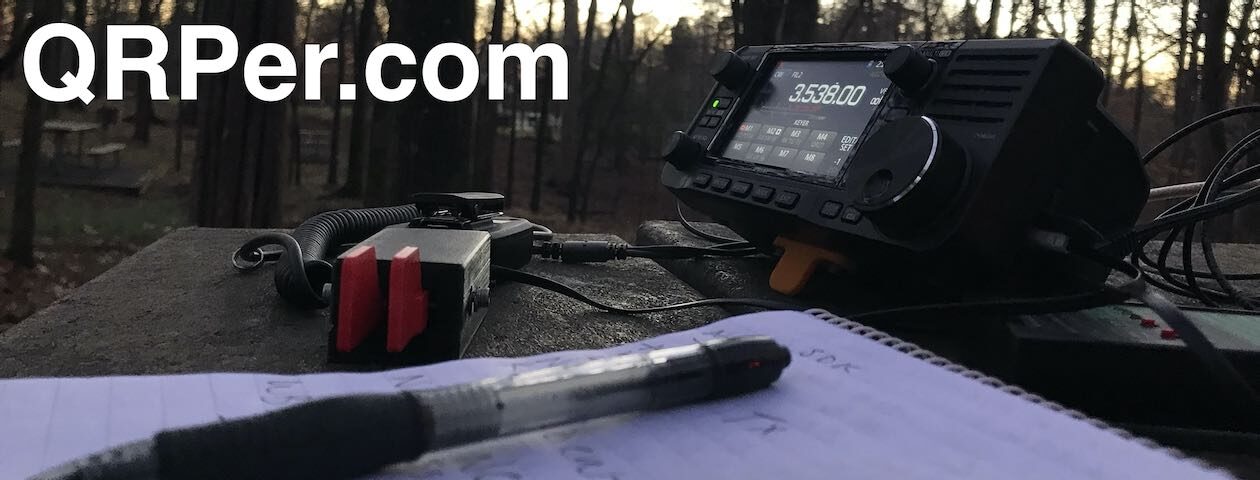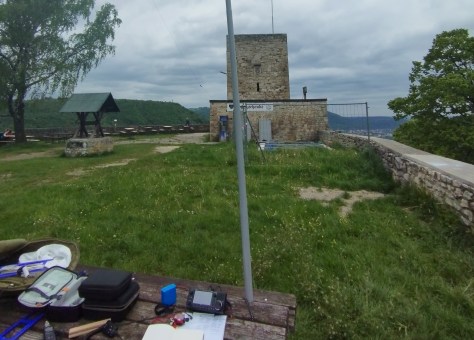by Thomas (DM1TBE)
If you followed my activation reports, you may (or may not) remember that I have just started pursuing POTA this year with the program gaining popularity in Europe and hence resulting in sufficient chasers for activations. However, the number of parks is not that high in Germany when compared to other countries. So the local POTA admins asked to submit proposals to fill the gaps across Germany.
Last Friday, I was browsing through the area I live in and thought about areas that would suit POTA. I stumbled upon Spielburg. The upper part of the SOTA summit Hohenstaufen, which I have visited and written a report about earlier this year, was once higher, but about two million years ago, slid down and formed the present-day Spielburg.
Not much of it remains today, as it was used as a quarry until the 1950s. Today it is a protected nature area of 31 ha / 77 acres consisting of a unique biotope with distinctive white Jura limestone cliffs. Although not large, it is popular among the locals for hiking, as a viewing point, and – as I have spotted during my visit – a place for romantic picnics.
So I suggested the area to the local POTA admins on a Friday afternoon. The following day, late in the evening, I received an email from local POTA admin Heinrich, DO1HFS, telling me that my proposal has been accepted as DA-0514. What a great response time – Vielen Dank, Heinrich.
I have been there a couple of times without a radio but with family and kids, but I did not pay attention to possible locations for an activation. I checked some online maps and imagery, but it did not help me much further. So I took the SOTAbeams Band Hopper III and the vertical JPC-12 with me to be prepared for larger and smaller possibilities. I also want to have at least 36 QSOs after 7pm local time to complete my POTA Late Shift Activator award. Therefore, I thought using FT8, which I have never used before during an activation, would make it easier to achieve such a number.
So the following Sunday, I started the activation. This one and all my previous activations were “backpack” activations, i.e., all my equipment fitted into a backpack, and I walked at least the last meters, usually over a mile, carrying all the stuff. In this case, my place for the activation was just 1 km / 0.6 mi away from parking, but I walked through the whole area to find the best place. Eventually, I found a wooden bench with a nice view and a meadow behind, where there was sufficient space for the SOTAbeams Bandhopper linked dipole for the 20, 30, and 40-meter bands.
The equipment I used consisted of
- SOTAbeams Band Hopper III – (linked dipole 20m, 30m, 40m)
- SOTAbeams Tactical Mini telescopic mast (6 m / 19.6 ft)
- EREMIT 12V 4Ah LiFePo4 (website in german)
- Icom IC-705
- BaMaKeY TP-III – ultra compact twin paddle
plus some other utilities such as a Surface Laptop for WSJT-X, the PAC-12 vertical antenna, which I have not used, pen & paper… Continue reading New POTA Location: From Proposal to Activation at Lightspeed



















































